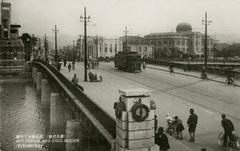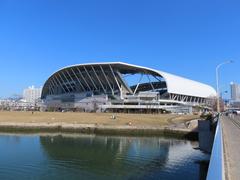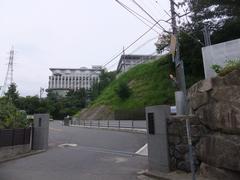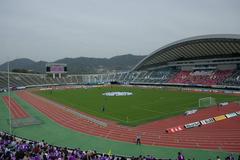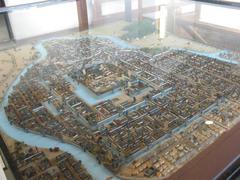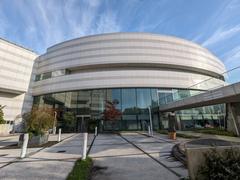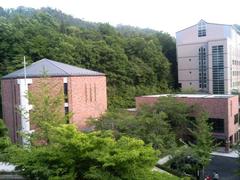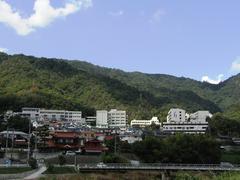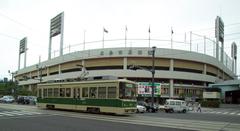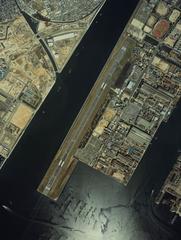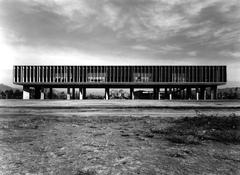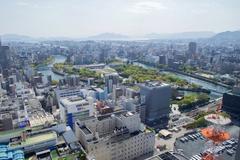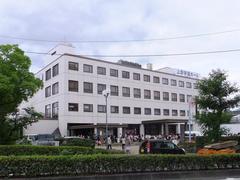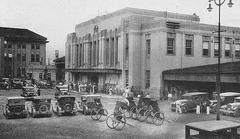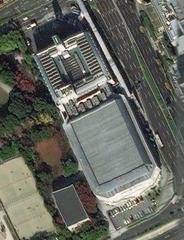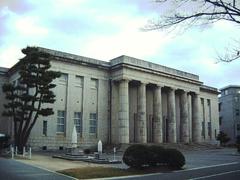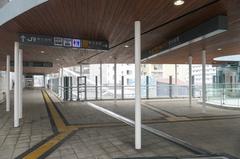Shukkei-En Garden Hiroshima: Visiting Hours, Tickets, and Complete Guide
Date: 03/07/2025
Introduction to Shukkei-En Garden: History & Cultural Significance
Shukkei-En Garden (縮景園), situated in the heart of Hiroshima, is a masterful example of Japanese landscape gardening and a living monument to the city’s history and resilience. Established in 1620 by Asano Nagaakira, the daimyo of Hiroshima, and designed by renowned tea master Ueda Sōko, Shukkei-En—meaning “shrunken-scenery garden”—translates nature’s grandeur into an intimate, walkable space. The garden’s design draws on inspiration from Chinese landscape paintings and traditional Japanese aesthetics, blending mountains, valleys, rivers, and forests within a compact, harmonious layout.
Over centuries, Shukkei-En has served as a private retreat, a gathering place for cultural pursuits, and a symbol of hope. Severely damaged by the atomic bombing of 1945, the garden became a refuge for survivors and was painstakingly restored postwar, symbolizing Hiroshima’s enduring spirit. Today, as a designated Place of Scenic Beauty, Shukkei-En hosts seasonal festivals, tea ceremonies, and art exhibitions, connecting modern visitors to centuries-old traditions (Japan Travel Explorer; Hiroshima Vibes; Explore Hiroshima).
Table of Contents
- Introduction
- Origins and Early Development
- Design Philosophy and Garden Features
- Historical Significance
- Essential Visitor Information
- Seasonal Highlights
- Notable Events & Experiences
- Nearby Attractions
- Frequently Asked Questions (FAQ)
- Visual Media & Resources
- Conclusion
Origins and Early Development
Commissioned by Asano Nagaakira in 1620 and designed by Ueda Sōko, Shukkei-En embodies early Edo-period landscape artistry. The “shrunken-scenery” concept aims to recreate vast natural landscapes—mountains, rivers, valleys, and forests—on a miniature scale, making every turn of the strolling path a new scenic discovery (Japan Travel Explorer; Hiroshima Vibes).
Design Philosophy and Garden Features
Bridges & Islands
The garden’s central pond, Takuei-chi, is surrounded by small islands, stone and wooden bridges—most notably the arched Koko-kyo (Rainbow Bridge)—which offer constantly shifting perspectives and photo opportunities. These elements evoke distant landscapes and encourage slow, contemplative exploration (Veronika’s Adventure).
Tea Houses
Scattered throughout are several historic tea houses, such as Seifukan, where visitors can participate in traditional Japanese tea ceremonies, immersing themselves in centuries-old cultural rituals (Hiroshima Vibes).
Seasonal Plantings
Shukkei-En is celebrated for its dynamic seasonal displays: cherry blossoms and plum blooms in spring, irises and lush greenery in summer, fiery maples in autumn, and tranquil, snow-dusted scenes in winter. Each season offers a unique garden atmosphere (Japan Travel Explorer).
Historical Significance
Edo Period to Meiji Restoration
Originally a private retreat for the Asano family and their guests, Shukkei-En hosted political and cultural gatherings. Following the Meiji Restoration, the garden was opened to the public, reflecting a shift toward cultural democratization (Explore Hiroshima).
Wartime Destruction and Restoration
The garden was devastated by the atomic bomb in 1945, serving as a refuge for survivors. Restoration began soon after, and Shukkei-En reopened in 1951, becoming a symbol of Hiroshima’s resilience and commitment to peace (Explore Hiroshima).
Essential Visitor Information
Visiting Hours
- March–November: 9:00 AM – 6:00 PM (last entry 5:30 PM)
- December–February: 9:00 AM – 5:00 PM (last entry 4:30 PM)
- Closed: December 29–31 (Japan Guide)
Ticket Prices
- Adults: 260 yen
- High school students: 150 yen
- Elementary/junior high: 100 yen
- Children under 6: Free (Japan Guide; Olivier Robert)
Tickets are available at the gate; no advance booking is usually required.
Accessibility
- Wheelchair-accessible paved paths (some areas and bridges may be challenging)
- Restrooms and seating available
- Approximately 15 minutes’ walk from Hiroshima Station; accessible by tram and bus (JR Pass)
Travel Tips
- Best Times: Spring (late March–early April) for cherry blossoms, autumn (mid–late November) for fall foliage
- Peak Periods: Arrive early or visit on weekdays to avoid crowds
- Weather: Dress for the season; bring sun protection in summer and warm clothing in winter
- Photography: Respect restrictions during festivals and ceremonies
Seasonal Highlights
Spring: Enjoy cherry and plum blossoms, especially during the Sakura Festival with night illuminations and tea ceremonies (Japan Travel Note).
Summer: Lush greenery, hydrangeas, and shaded walkways offer a cool retreat.
Autumn: Vivid maple foliage and the Momiji Festival feature dramatic nighttime illuminations (Kanpai Japan).
Winter: Quiet, contemplative landscapes, often dusted with snow, make for a peaceful visit.
Notable Events & Experiences
- Traditional Tea Ceremonies: Held in garden tea houses, especially during cherry blossom and autumn foliage seasons (JapanActivity).
- Seasonal Festivals: Sakura and Momiji festivals, with evening garden illuminations and matcha served with Japanese sweets.
- Art Exhibitions and Workshops: Ikebana, calligraphy, and more, connecting visitors with Japanese arts (JapanActivity).
- Koi Feeding: Purchase koi food at the entrance and feed the colorful carp in the central pond—a family favorite (Nerd Nomads).
Nearby Attractions
- Hiroshima Prefectural Art Museum: Adjacent to the garden; combined tickets available.
- Hiroshima Castle: A short walk away, offering historical exhibits and city views.
- Peace Memorial Park & Museum: Accessible by tram or bus, providing deeper context on Hiroshima’s history.
Frequently Asked Questions (FAQ)
Q: What are the Shukkei-En Garden visiting hours?
A: Open 9:00 AM–6:00 PM (March–November) and 9:00 AM–5:00 PM (December–February); last entry 30 minutes before closing.
Q: How much is admission?
A: 260 yen for adults, 150 yen for high school students, 100 yen for children.
Q: Is the garden wheelchair accessible?
A: Most pathways are accessible, but some areas with steps or uneven terrain may be challenging.
Q: Can I participate in tea ceremonies?
A: Yes, especially during seasonal festivals—check the official website or inquire at the entrance.
Q: How do I get to Shukkei-En from Hiroshima Station?
A: It’s about a 15-minute walk; trams and sightseeing buses are also available.
Visual Media & Resources
Enhance your visit by exploring virtual tours and photo galleries on official tourism websites. Images of cherry blossoms, autumn foliage, and illuminated festivals are widely available, often with descriptive alt text for accessibility and SEO (Japan Travel Note).
Conclusion
Shukkei-En Garden is a living testament to Hiroshima’s artistry, resilience, and cultural depth. Whether you’re seeking tranquil beauty, historical reflection, or immersive cultural experiences, Shukkei-En offers a unique journey through Japan’s garden tradition and Hiroshima’s enduring spirit.
Plan your visit today—and for an even richer experience, download the Audiala app for guided tours, event updates, and interactive maps. Explore more of Hiroshima’s historical treasures, and follow our social channels for the latest travel tips and insights.
